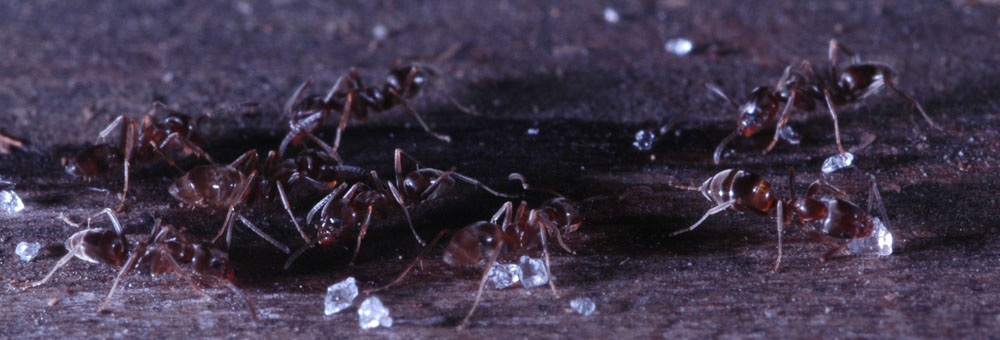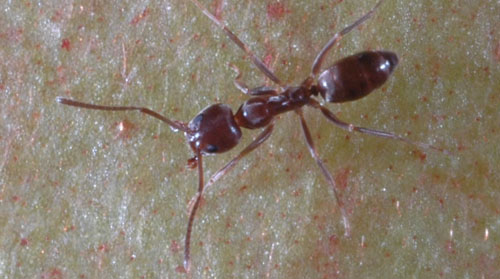|
The Argentine ant (Linepithema humile ) in British Columbia | |
 | |
|
The Argentine ant collecting sugar.
| |
|
Quick History: In the fall of 2012 a pest management professional with the Victoria Pest Company recognized that an ant causing a problem in one location in Victoria had some unusual attributes, mostly relating to the size of the colony. These ants were sent to Laurel Hansen at the Evergreen State College in Washington State who identified them as the Argentine ant, Linepithema humile . Following a pest management conference in Vancouver these ants were also brought to my attention, allowing me to visit the location in February of 2013. At this time the ants were active indoors at one location which was maintained in a warm and humid condition, but were reported to be active outdoors during the summer in an area about 100 x 40m in size, affecting several businesses and at least 1 residence. This is the first appearance of this ant in Canada. | |
|
The Nature of the Problem The Argentine ant (Linepithema humile) is listed by the International Union for the Conservation of Nature as one of the worst 100 invasive species in the world. Having said that, while this species has established in one location in Victoria, BC, it is doubtful if it can establish in most areas of Canada. It may well be restricted climatically to southern Vancouver Island. The Argentine ant is notorious for forming supercolonies where up to 1 million workers can live in the soil under an area of 10 square metres. Colonies show no aggression toward each other and can spread over very large areas where conditions are suitable. At only about 3 mm in length, it is easy to underestimate this ant when only viewing a few. One of these ants would not stretch all of the way across the audio jack opening on your cellphone (these are usually 3.5 mm in diameter) While Canadians may experience ants invading their homes from time to time, most would be unprepared for the scale at which these ants operate. Their numbers can be overwhelming. Fortunately they do not sting or bite. Where the Argentine ant has established in the USA, they have had an negative impact on other insects. Further, through the tending of aphids they have been problematic in the vineyards of California. |
|
|
|
|
This website is intended to maintain a record of this ant in British Columbia, provide some information regarding its natural history, and pass along what is known with respect to control. |
|
Links to more specific information Shipping ants for identification Contact: Dr. Robert J. HigginsBiological Sciences Thompson Rivers University 1250 Western Avenue Williams Lake, BC V2G 1H7 250.392.8176 (office) rhiggins@tru.ca |
|
All images by R. Higgins unless otherwise noted |
This Web Page Created with PageBreeze Free HTML Editor
